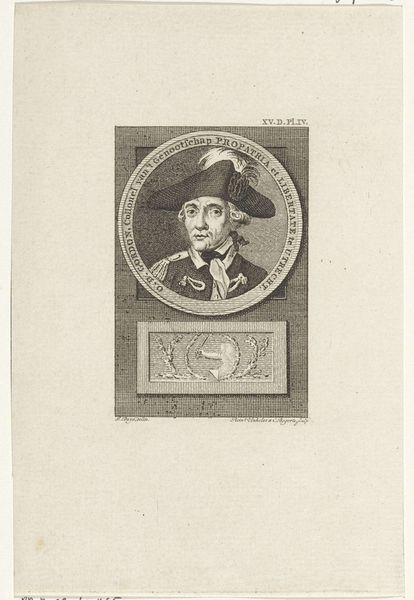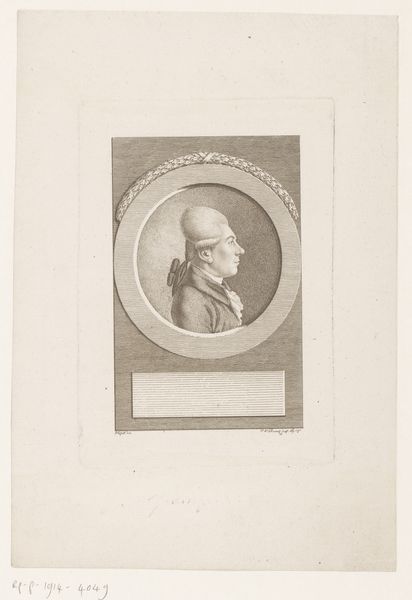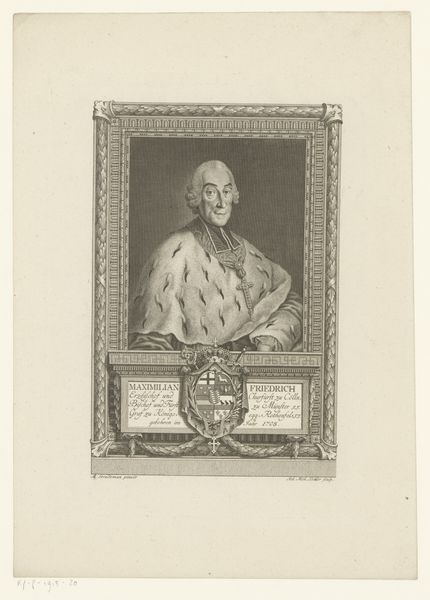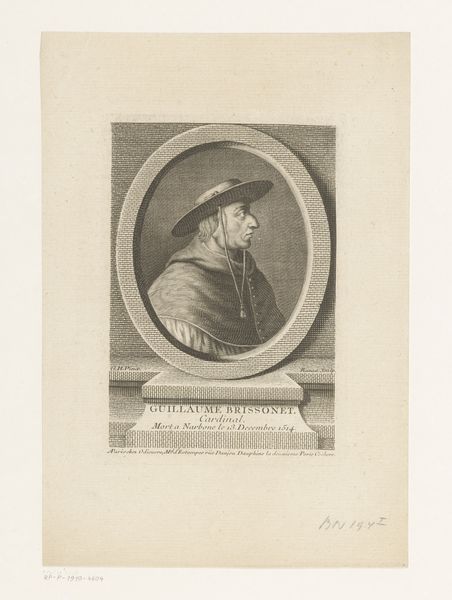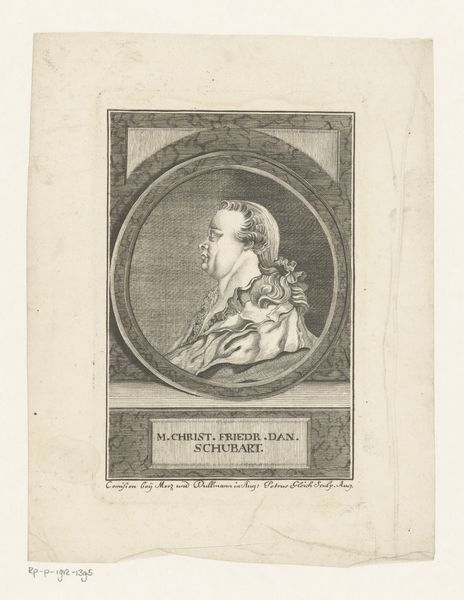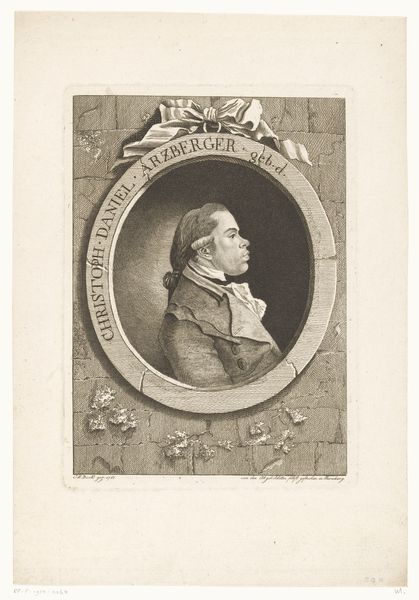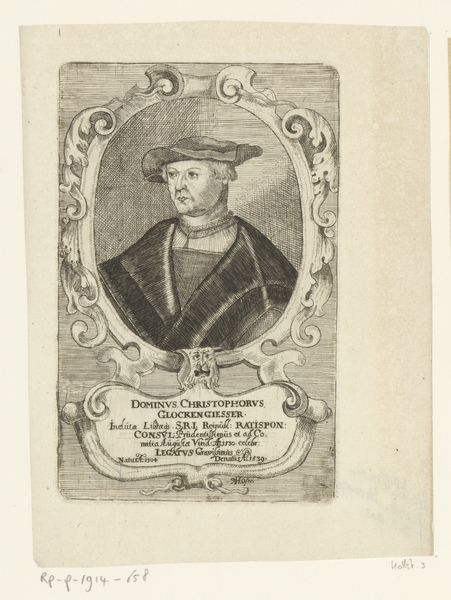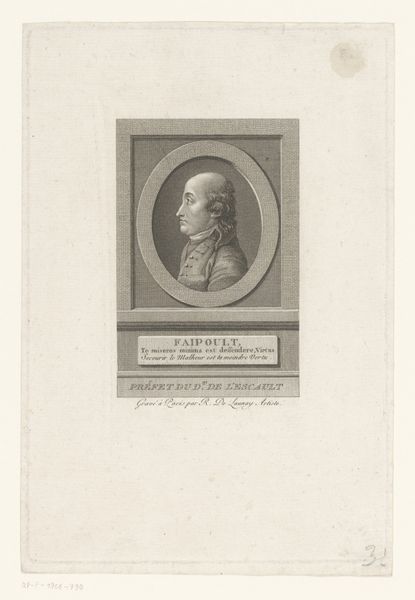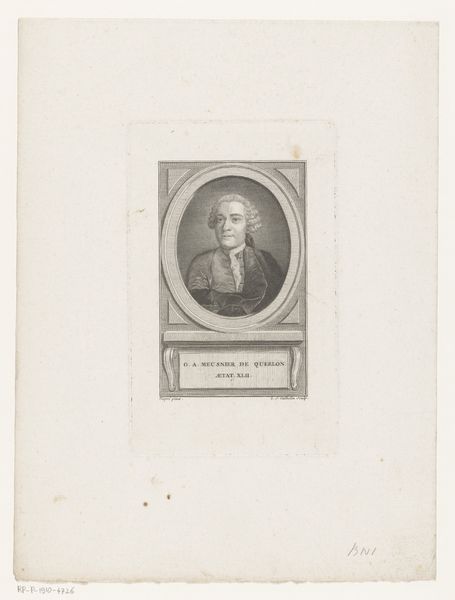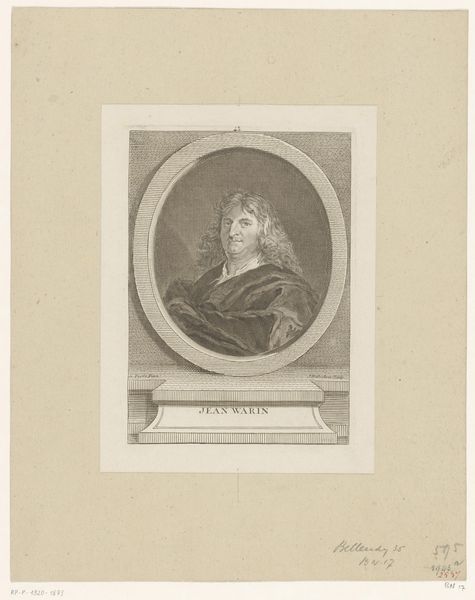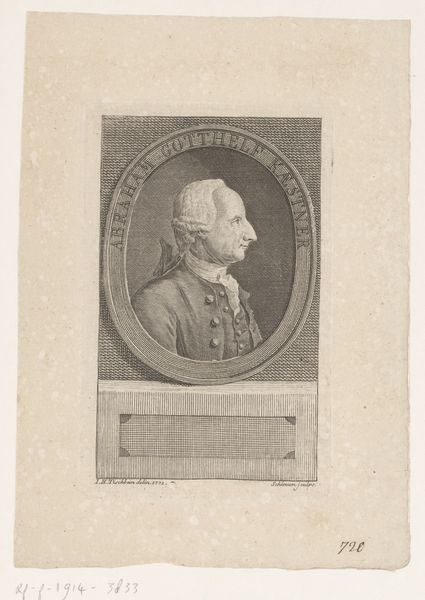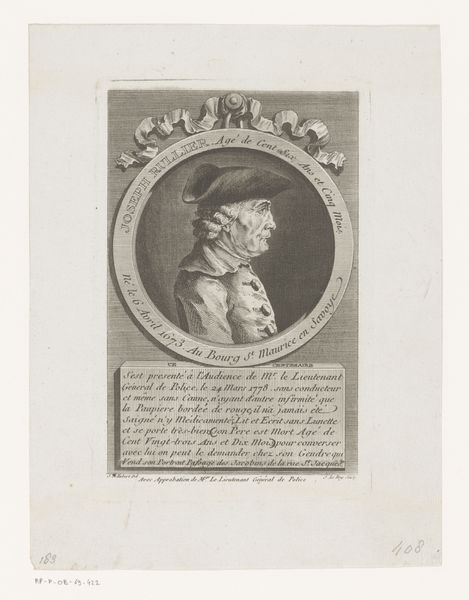
Dimensions: width 169 mm, width 116 mm
Copyright: Rijks Museum: Open Domain
Curator: Looking at Reinier Vinkeles's "Portret van Gerardus Oorthuys", an engraving from between 1783 and 1795, currently residing here at the Rijksmuseum. It has a fascinatingly stiff quality. It almost feels more like a carefully reproduced document than a lively likeness. Editor: The precision of the engraving gives it that character, certainly. The almost neoclassical setting of the portrait, the naval gear depicted underneath all feed into a larger picture. It conveys this Dutch captain, Oorthuys, as more than just an individual. It also depicts him as a symbol of the navy. His very image serves to represent the authority and prowess associated with naval service. Curator: The stark contrasts achieved through engraving, with the fine lines delineating form and texture, highlight Vinkeles's skillful labor in capturing both likeness and social role. What I'm seeing here is the result of tools and technical expertise shaped by broader commercial imperatives of portraiture in that period. Editor: Note the oval frame of the portrait, an interesting callback to Roman portraiture conventions. Above his image is the inscription naming him. Below are depicted military motifs such as the anchor, flags, and a cannon, symbolizing protection and stability. These evoke a narrative of service. Curator: In this reproductive process of printmaking we witness a subtle democratisation of the image, making Oorthuys visible to a wider audience. It is a social leveler mediated through labor and the commercial logic driving such ventures. It's no longer just about representation but how it gets circulated and consumed. Editor: I agree to an extent. I believe the layering of symbols adds levels of meaning. His composed face coupled with naval elements evokes a complex narrative intended to position Oorthuys not just as a captain, but as an archetype embodying strength, duty, and valor. Curator: Considering the materials—the copper plate, inks, and paper—along with Vinkeles’s technique and distribution strategies opens a fascinating vista into the workings of late 18th-century artistic production. That focus expands beyond mere iconographic analysis of symbols and meaning. Editor: Both methods, ultimately, enrich our comprehension, by tracing intricate links among visual artifacts, individual experiences, cultural values, and societal narratives they represent. Curator: Well, indeed. On that, at least, we concur! Editor: Perfectly put!
Comments
No comments
Be the first to comment and join the conversation on the ultimate creative platform.
